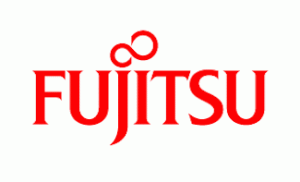 Fujitsu Ltd. (TYO: 6702) of Tokyo, Japan, is one of the world’s leading developers of information and communication technologies (ICT). Personal computing and advanced microelectronics are among the other products that this company brings to market.
Fujitsu Ltd. (TYO: 6702) of Tokyo, Japan, is one of the world’s leading developers of information and communication technologies (ICT). Personal computing and advanced microelectronics are among the other products that this company brings to market.
In its ICT development activities, Fujitsu follows a “human centric innovation” mindset by seeking to create open digital ecosystems and connected infrastructures for a variety of businesses models. For three of the past five years, Fujitsu has invested 5.3 percent of its net sales on research and development, and in 2013 the company spent a total of 231 billion yen on R&D. Along with Japanese research facilities in Kawasaki and Atsugi, the corporation also operates R&D activities at sites in England, China and the United States. The Fujitsu Group claims a patent portfolio of about 100,000 pending and granted patents across the world, the majority of those being filed in Japan, although Fujitsu’s patent filings in America make up close to a quarter of the total portfolio.
Personal computing and other electronics products have been focus areas of late for Fujitsu, as is evidenced by recent unveilings of a new line of tablet 2-in-1 PC computers as well as a wearable ring device which can process gestural commands. The corporation just announced its nomination of Tatsuya Tanaka as company president once current president Masami Yamamoto, who has served in that post since 2010, becomes chairman if both are approved at the corporation’s June shareholders’ meeting. Fujitsu is also seeking to increase its Internet of Things and cloud services with the construction of two new data annexes at both of its main Japanese data centers in Tatebayashi and Akashi by July 2016.
During 2014, Fujitsu was granted 1,820 patent grants from the U.S. Patent and Trademark Office, the 13th-highest total for any single entity receiving U.S. patents that year. Using the Innography visualizations tool we identified the primary areas of innovation represented in the U.S. patents obtained by Fujitsu in 2014. As you can see from the text cluster diagram to the right, a large percentage of the patents issued to Fujitsu in 2014 were focused on information processing, data storage units, signals, and base stations, especially stations developed for mobile networks.
What follows is our survey of Fujitsu’s recently issued U.S. patents, as well as the company’s recently published U.S. patent applications.
Fujitsu’s Issued Patents: From Ring Health Monitors to Vehicle Collision Warning Systems
![]() Wearable technology, especially sensors which can be used to monitor vital signs and other important physical fitness and medical data, were featured in a couple of patents that we noticed. The use of wearable sensors to monitor and analyze a patient’s health is disclosed and protected by U.S. Patent No. 8928671, which is titled Recording and Analyzing Data on a 3D Avatar. The method claimed here involves displaying a 3D avatar of a person’s body which is designed to receive inputs on physiological events including time and location of those events and any medication that should be administered. Diagrams attached to this patent application indicate that the system would utilize ring-based sensors for analyzing a person’s health. A fitness tracking technology that automates tracking program functions based on sensor inputs regarding a person’s acceleration is discussed within U.S. Patent No. 8942796, which is titled Exercise Determination Method, and Electronic Device. This innovation is intended to produce a heart rate monitor program that starts and stops automatically based on acceleration data of a person’s body. The patent protects an exercise determination method that involves acquiring a detection value from an acceleration sensor, controlling a heart rate sensor to start or stop depending on the detection value and switching between calculating an exercise intensity based on detection values of either the acceleration sensor or the heart rate sensor.
Wearable technology, especially sensors which can be used to monitor vital signs and other important physical fitness and medical data, were featured in a couple of patents that we noticed. The use of wearable sensors to monitor and analyze a patient’s health is disclosed and protected by U.S. Patent No. 8928671, which is titled Recording and Analyzing Data on a 3D Avatar. The method claimed here involves displaying a 3D avatar of a person’s body which is designed to receive inputs on physiological events including time and location of those events and any medication that should be administered. Diagrams attached to this patent application indicate that the system would utilize ring-based sensors for analyzing a person’s health. A fitness tracking technology that automates tracking program functions based on sensor inputs regarding a person’s acceleration is discussed within U.S. Patent No. 8942796, which is titled Exercise Determination Method, and Electronic Device. This innovation is intended to produce a heart rate monitor program that starts and stops automatically based on acceleration data of a person’s body. The patent protects an exercise determination method that involves acquiring a detection value from an acceleration sensor, controlling a heart rate sensor to start or stop depending on the detection value and switching between calculating an exercise intensity based on detection values of either the acceleration sensor or the heart rate sensor.
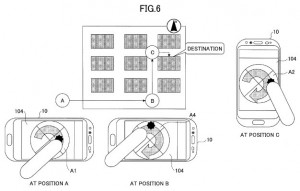 Fujitsu’s innovation in portable electronic devices extend far beyond the line of tablet PC’s discussed in today’s intro. We noted an interesting system for guiding users of mobile devices to an intended locations which was outlined within U.S. Patent No. 8938360, issued under the title Guidance Apparatus and Guidance Method. This particular invention enables a mobile display to provide a user with tools for confirming a direction in which to travel when reaching an intersection or a different instance of a change in movement direction. The patent protects a guidance apparatus that utilizes a detection section for detecting contact of an object via a contact surface, a measurement section for measuring the orientation of the guidance apparatus, a calculation section that calculates a direction of a predetermined orientation relative to a measured orientation and a vibration section that generates vibration if the detection section detects contact with an object relative to the predetermined orientation. Improved usability for virtual keyboards offered by smartphones and other mobile terminals is the focus for U.S. Patent No. 8902161, which is titled Device and Method for Detecting Finger Position. The finger position detection device claimed here includes a processor which executes instructions for detecting a hand region including a plurality of fingers from a captured image, divides that image into regions each having a plurality of cells and analyzes feature values to determine the depth and arrangement axis of fingers. This invention provides a virtual keyboard with 30 keys which is capable of determining whether a user intended to press a key based on the height and position of the user’s hand.
Fujitsu’s innovation in portable electronic devices extend far beyond the line of tablet PC’s discussed in today’s intro. We noted an interesting system for guiding users of mobile devices to an intended locations which was outlined within U.S. Patent No. 8938360, issued under the title Guidance Apparatus and Guidance Method. This particular invention enables a mobile display to provide a user with tools for confirming a direction in which to travel when reaching an intersection or a different instance of a change in movement direction. The patent protects a guidance apparatus that utilizes a detection section for detecting contact of an object via a contact surface, a measurement section for measuring the orientation of the guidance apparatus, a calculation section that calculates a direction of a predetermined orientation relative to a measured orientation and a vibration section that generates vibration if the detection section detects contact with an object relative to the predetermined orientation. Improved usability for virtual keyboards offered by smartphones and other mobile terminals is the focus for U.S. Patent No. 8902161, which is titled Device and Method for Detecting Finger Position. The finger position detection device claimed here includes a processor which executes instructions for detecting a hand region including a plurality of fingers from a captured image, divides that image into regions each having a plurality of cells and analyzes feature values to determine the depth and arrangement axis of fingers. This invention provides a virtual keyboard with 30 keys which is capable of determining whether a user intended to press a key based on the height and position of the user’s hand.
Vehicular technologies have been in focus for us here with our coverage of the 2015 Consumer Electronics Show and the recent publication of the Thomson Reuters State of Innovation in the Automotive Industry report. We were intrigued to note a pair of patents issued to Fujitsu for technologies in automotive fields. A system for monitoring driver behavior to calculate a target acceleration and speed for a driver is at the center of U.S. Patent No. 8930173, issued under the title Vehicle Behavior Estimation Device. The vehicle behavior estimation device protected here includes a memory configured to store position, time and speed data of a vehicle at different points, physical restriction conditions that indicate upper and lower limits of a vehicle’s target acceleration. The system also includes a processor that generates a target speed and target acceleration based upon vehicle state data 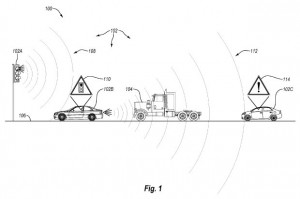 obtained at a predetermined time interval. A novel system for broadcasting warning messages to a series of vehicles traveling along the same thoroughfare is protected by U.S. Patent No. 8907814, which is titled Cooperative Vehicle Collision Warning System. The traffic information communication system claimed here includes a receiver configured to receive, via a single wireless carrier wave, messages about traffic conditions along a thoroughfare, a processor that determines whether the message is urgent or non-urgent and a transmitter that rebroadcasts the message with a transmission power which indicates whether or not the message is urgent. The message could cause the vehicle to issue a verbal or sound warning to a driver advising them to slow down or take another action appropriate to traffic conditions.
obtained at a predetermined time interval. A novel system for broadcasting warning messages to a series of vehicles traveling along the same thoroughfare is protected by U.S. Patent No. 8907814, which is titled Cooperative Vehicle Collision Warning System. The traffic information communication system claimed here includes a receiver configured to receive, via a single wireless carrier wave, messages about traffic conditions along a thoroughfare, a processor that determines whether the message is urgent or non-urgent and a transmitter that rebroadcasts the message with a transmission power which indicates whether or not the message is urgent. The message could cause the vehicle to issue a verbal or sound warning to a driver advising them to slow down or take another action appropriate to traffic conditions.
[Companies-1]
Patent Applications of Note: Water-Resistant Electronics, Cybersecurity and Pollution Management
Fujitsu technologies focused on analyzing biological data of a human subject are also featured in the company’s recently filed patent applications. U.S. Patent Application No. 20140378852, entitled Awakening-Degree Determining Device, Awakening-Degree Determination Program, and Awakening-Degree Determination Method, would protect a system designed to measure data related to the sleepiness of a subject or the degree to which that subject is awakened. The awakening-degree determining device claimed includes a processor that calculates the heartbeat interval of a subject, performs a frequency analysis on the heartbeat interval to calculate a power spectral density of each frequency which can be further analyzed to determine a degree of awakening of a subject.
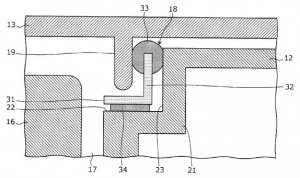 We were intrigued to note a couple of innovations regarding the use of electronic components in underwater environments. Electronic devices with improved water resistance are at the center of U.S. Patent Application No. 20140345899, which is titled Water Resistant Structure and Electronic Apparatus. The water resistant structure claimed has a first member with a stepped portion at an opening, a second member with a rib protruding from its back surface and a water-stop member with an elastically deformable water-stop that runs along the vertical surface of the stepped portion and is pushed against both the stepped portion and the protruding rib. This invention is designed to overcome shortcomings associated with O-rings used to create water resistant structures for electronics. The management of heat generated by electronics utilized in underwater vehicles is described by U.S. Patent Application No. 20150013956, filed under the title Heat Radiation Plate and Submarine Apparatus. This invention provides a cooling system for electronics utilized in underwater vehicles which doesn’t incorporate fans while reducing the amount of thermally-conductive resin used to transfer heat away from electronic components. The patent application claims a heat radiation plate that includes a depressed portion into which thermally-conductive heat transfer resin is poured and a plurality of check portions that renders a liquid level of a thermally-conductive resin to be visually checkable.
We were intrigued to note a couple of innovations regarding the use of electronic components in underwater environments. Electronic devices with improved water resistance are at the center of U.S. Patent Application No. 20140345899, which is titled Water Resistant Structure and Electronic Apparatus. The water resistant structure claimed has a first member with a stepped portion at an opening, a second member with a rib protruding from its back surface and a water-stop member with an elastically deformable water-stop that runs along the vertical surface of the stepped portion and is pushed against both the stepped portion and the protruding rib. This invention is designed to overcome shortcomings associated with O-rings used to create water resistant structures for electronics. The management of heat generated by electronics utilized in underwater vehicles is described by U.S. Patent Application No. 20150013956, filed under the title Heat Radiation Plate and Submarine Apparatus. This invention provides a cooling system for electronics utilized in underwater vehicles which doesn’t incorporate fans while reducing the amount of thermally-conductive resin used to transfer heat away from electronic components. The patent application claims a heat radiation plate that includes a depressed portion into which thermally-conductive heat transfer resin is poured and a plurality of check portions that renders a liquid level of a thermally-conductive resin to be visually checkable.
Networking innovations of various kinds have also been a recent R&D focus for Fujitsu, according to a pair of patent applications that we decided to share today. Cybersecurity technologies with enhanced capabilities for detecting malware intrusions are discussed within U.S. Patent Application No. 20150013005, entitled Apparatus and Method for Detecting an Attack in a Computer Network. The patent application claims an apparatus with a processor that acquires communication data, stores information in a memory regarding an external communication, including transmission source and destination addresses, and notifies the detection of an attack based on information extracted from the external communication. This invention improves upon conventional signature-based malware detection methods which often cannot detect customized or uniquely developed malware. Social networking and methods for managing contacts on a social network are featured within U.S. Patent Applications No. 20140351710, titled Virtual Social Group Management System, Virtual Social Group Management Method, and Computer Program. This innovation is intended to reduce the apprehension and emotional burdens which can be exacerbated when a person’s list of friends or contacts greatly expands. The display contents control method that would be protected controls content displayed on a user terminal apparatus regarding a service for interacting with a plurality of users along a communication line; the content displayed is updated in accordance with a request between users to enter into a particular relationship.
We’ve noted a couple of innovations in wireless charging systems over the past few months of the Companies We Follow series and Fujitsu has also entered the fray with U.S. Patent Application No. 20150008736, which is titled Wireless Power Transmission System and Wireless Power Transmission Method. The wireless power transfer system claimed here includes a plurality of power sources and at least one power receiver. The method of transferring power wirelessly involves the use of magnetic or electric field resonance and the designation of one power source as a master source; other power sources are designated as slave power sources. This wireless power transfer system is designed to address shortcomings associated with a lack of standardization in wireless power transfer techniques.
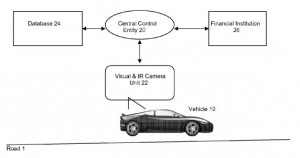 Finally, we were intrigued to note a couple of patent applications filed to protect vehicular technologies and we wanted to share one explained within U.S. Patent Application No. 20150006018, filed under the title Detecting Operating Mode of Hybrid Vehicles. This invention relates to a system for determining vehicle emissions from moving hybrid vehicles, which will generate an increasingly wide array of emissions as more auto manufacturers build cars which operate in a variety of low or zero-emission modes. The method of managing vehicle emissions claimed here includes receiving a thermal measurement indicative of emissions from a vehicle, detecting an identity of the vehicle, determining one or more operating modes of a vehicle based on its identity and inferring the operation mode being used by a vehicle. This pollution management system takes into account the various operating modes available to hybrid vehicles to more fairly levy financial charges based on the vehicle operating mode. As the background section states, this pollution management is one of many “Smart City” technologies being developed for large-scale networks of transportation and pollution management in urban environments.
Finally, we were intrigued to note a couple of patent applications filed to protect vehicular technologies and we wanted to share one explained within U.S. Patent Application No. 20150006018, filed under the title Detecting Operating Mode of Hybrid Vehicles. This invention relates to a system for determining vehicle emissions from moving hybrid vehicles, which will generate an increasingly wide array of emissions as more auto manufacturers build cars which operate in a variety of low or zero-emission modes. The method of managing vehicle emissions claimed here includes receiving a thermal measurement indicative of emissions from a vehicle, detecting an identity of the vehicle, determining one or more operating modes of a vehicle based on its identity and inferring the operation mode being used by a vehicle. This pollution management system takes into account the various operating modes available to hybrid vehicles to more fairly levy financial charges based on the vehicle operating mode. As the background section states, this pollution management is one of many “Smart City” technologies being developed for large-scale networks of transportation and pollution management in urban environments.

![[IPWatchdog Logo]](https://ipwatchdog.com/wp-content/themes/IPWatchdog%20-%202023/assets/images/temp/logo-small@2x.png)

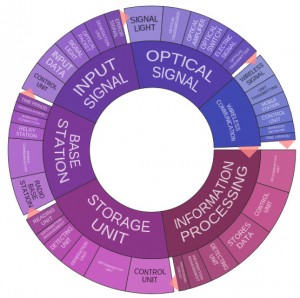
![[Advertisement]](https://ipwatchdog.com/wp-content/uploads/2024/04/UnitedLex-May-2-2024-sidebar-700x500-1.jpg)
![[Advertisement]](https://ipwatchdog.com/wp-content/uploads/2024/04/Artificial-Intelligence-2024-REPLAY-sidebar-700x500-corrected.jpg)
![[Advertisement]](https://ipwatchdog.com/wp-content/uploads/2024/04/Patent-Litigation-Masters-2024-sidebar-700x500-1.jpg)

![[Advertisement]](https://ipwatchdog.com/wp-content/uploads/2021/12/WEBINAR-336-x-280-px.png)
![[Advertisement]](https://ipwatchdog.com/wp-content/uploads/2021/12/2021-Patent-Practice-on-Demand-recorded-Feb-2021-336-x-280.jpg)
![[Advertisement]](https://ipwatchdog.com/wp-content/uploads/2021/12/Ad-4-The-Invent-Patent-System™.png)






Join the Discussion
No comments yet.